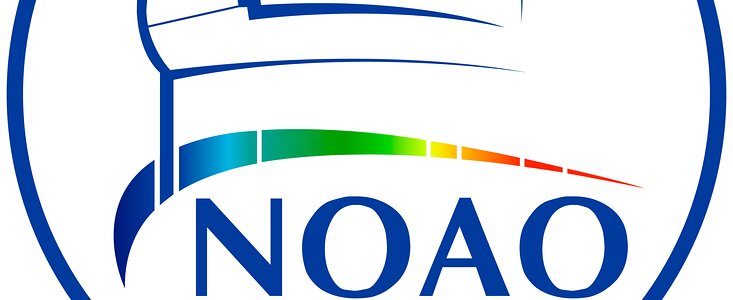NOAO Telescopes Played Major Role in Nobel-Prize Winning Projects
5 Octubre 2011
The 2011 Nobel Prize in Physics was awarded to Saul Perlmutter, Brian Schmidt, and Adam Riess for their discovery of the acceleration of the Universe, one of the more surprising cosmological results in modern astronomy. The discovery was enabled in large part through use of National Science Foundation (NSF) facilities operated by the National Optical Astronomy Observatory (NOAO) with headquarters in Tucson, Arizona and telescopes in Arizona and Chile.
Two independent groups used Type-Ia supernovae (SNe) to map out the Universe. The High-z Supernova Search (High-z SN) team was founded by Brian Schmidt of Australian National University and Nicholas Suntzeff of NOAO’s Cerro Tololo Inter-American Observatory (CTIO), while the Supernova Cosmology Project (SCP) was led by Saul Perlmutter of the University of California at Berkeley.
Both teams used the NOAO Blanco 4-meter telescope at CTIO. The Big Through Put Camera (an optical imager based on technology much like modern digital cameras) was key to the success of the project when coupled with the wide field of view Blanco telescope. CTIO staff, both scientific and technical, were crucial in providing the support that allowed these very difficult observations to be made successfully.
Type Ia SNe are exceptionally bright and so can be seen at great distances. If they were all of the same intrinsic brightness, then their distance could be judged by how faint they appeared. At the time when the two groups were developing their programs, new observations had shown that Type Ia SNe were not all identical. Fortunately, the Calan/Tololo SN survey, led by Mario Hamuy, Mark Phillips, Nicholas Suntzeff (all CTIO astronomers at the time), and Jose Maza (Universidad de Chile), had found many nearby Type Ia SNe using telescopes at CTIO. Analysis of this well-calibrated SNe sample showed that the brightness of a Type Ia SN could be deduced from the way a supernova brightened and then faded away. Using this knowledge, each team could determine the brightness of distant SNe, and thus their distances. The Calan/Tololo survey was essential to their success.
The SCP started using NOAO’s Mayall 4-meter and 2.1-meter telescopes at Kitt Peak in Arizona to find and follow distant Type Ia SNe. The WIYN 3.5-meter telescope at Kitt Peak was also used by the High-z SN team and the SCP to observe many of the SNe found by the Blanco 4-meter telescope in Chile. No single telescope could have performed this project. It required the wide-angle capability of the NOAO 4-meter telescopes as well as the spectroscopic follow on observations of many 8 and 10-meter telescopes like the Keck telescopes in Hawaii and the calibrations provided by earlier projects using smaller telescopes.
The nature of the “dark energy” that is apparently driving this acceleration is still uncertain. NOAO facilities continue to play an important role in trying to understand dark energy. In the near future, the Dark Energy Survey will install the 500-megapixel Dark Energy Camera for the Blanco 4-meter telescope. There are plans for a large instrument (BigBOSS) for NOAO’s Mayall 4-meter telescope at Kitt Peak to study dark energy using galaxies to map out the Universe. NOAO is also a partner in the Large Synoptic Survey Telescope (LSST) to be built near CTIO in Chile. The LSST will map the entire southern sky repeatedly over 10 years searching for variable and transient objects, supernovae included, and will contribute to the quest for understanding of dark energy.
Más Información
NOAO is operated by Association of Universities for Research in Astronomy Inc. (AURA) under a cooperative agreement with the National Science Foundation.
Contactos
Robert Blum
Deputy Director National Optical Astronomy Observatory
950 N. Cherry Ave. Tucson, AZ 85719, USA
Tel: +1 520-318-8233
Cel: +1 520 318 8170
Correo electrónico: rblum@noao.edu
About the Release
| Release No.: | noao1105 |
| Legacy ID: | NOAO 11-04 |
| Facility: | Nicholas U. Mayall 4-meter Telescope, Víctor M. Blanco 4-meter Telescope |




